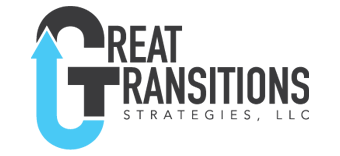“I took on this new role in my organization but, I still have people coming to me for answers from my previous position. Because of the time they take up, I feel like I am pulling a trailer up a hill and cannot make any progress in my new role.”
Ever have this feeling?
To progress – we must have endings.
Not stopping or ending something may be all that is holding us back from achieving our long pursued goal.
Dr. Henry St. Cloud in his book Necessary Endings has explored endings in depth. I want to look at it from the perspective of you as a professional and a leader and make it very practical.
When I think about endings, I consider three elements; what needs to end, when it needs to end, and how it needs to end.
What Needs to End?
Consider a transition you are currently working through or expect in the near future. Typically transitions to consider are: promotions, career progression/transitions, starting a business, moving to or from the government and private sector, or retirement.
Name the transition you want to assess.
If this is an ongoing transition, how is it going on a scale of 1 to 10. If it is not a 10 what factors are holding you back.
Be rigorous and brutally honest with yourself. What specific actions are you taking that are holding you back? In the example above, you are still providing guidance, time, and support to your previous team.
The time and energy spent assisting your previous team, may be the impediment slowing your transition? If so the relationship with your previous organization needs to end.
Another example: You started a business and entered into low paying contracts with your first round of clients. Now, two years later you spend significant time and effort negotiating contract renewals with this group. Why, because they expect lower pricing. The time, effort, for the profit margin is frustrating you.
What has to end here? Probably the long negotiations.
A thought on identifying what needs to end.
You may be overlooking clear signals on what needs to end and misinterpreting them. Think about events that “trigger” you. Triggers are signals. Consider the above events and what triggers you might be receiving.
Every time you see an email or phone call from a member of your previous team, what is your reaction?
How about when someone talks about the contracts with the early clients? How do you feel? If you are triggered, it is time to think about what the triggers are telling you.
When Does it Need to End?
Next consideration is “when” the ending takes place. For the first example, when should the assistance to your previous organization have ended? The day you left, 7 days, 30 days, or should it be ongoing?
What about those early clients. When should the special pricing end?
How Should You End the Relationship?
Last consideration is “how” the ending takes place. How you end a behavior or relationship can have significant impacts, positively or negatively.
Abruptly ending the relationship with your previous organization or loyal early adopters can damage your reputation. The key consideration I have seen make endings work is; transparency. Being tactful and direct with what is ending, when it is ending, and how.
Transparency is not always easy. However, it will make the transition easier as you will have released a drag on your performance.
Here are potential considerations of the above examples to ensure an ending takes place well.
On leaving the team. Letting them know you will meet with the replacement lead twice in the next month for an hour to answer any questions. After that the new lead is on her own.
It is clear the help is ending, when it is ending (over a month’s time) and how it will end (with a couple of one-on-one meetings to assist with loose ends).
With your early adopters. Sending a letter three months prior to contract renewal with the details of the price increases on their upcoming contract. The contract thanks them for their support and loyalty as well as the reasoning for the increases.
What is ending, when it is ending, and how are all included in this method.
What are some behaviors, relationships, or practices you need to stop to move forward?






